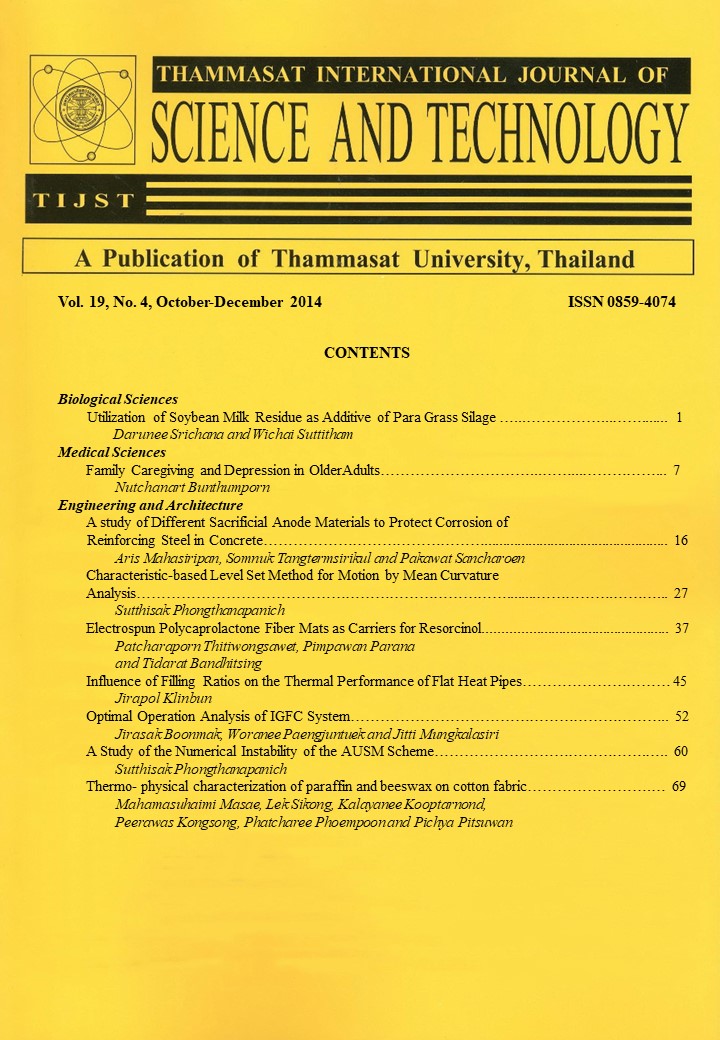Electrospun Polycaprolactone Fiber Mats as Carriers for Resorcinol
##plugins.themes.bootstrap3.article.main##
摘要
Resorcinol (RC)-loaded electrospun polycaprolactone (PCL) nanofibers were prepared by electrospinning from 12% and 15% w/v PCL solutions containing either 2.5 or 5 wt.% RC (based on the weight of PCL). The mixture of 1:1 v/v dichloromethane: N,N-dimethylformamide was used as solvent. The average diameters of RC-loaded PCL nanofibers prepared from 12%PCL/2.5%RC, 12%PCL/5%RC, and 15%PCL/2.5%RC were 137, 147, and 185 nm, respectively. The amounts of water retention and the release characteristics of RC from nanofibers in an acetate buffer (pH 5.5) were investigated and compared with the corresponding cast-films fabricated by the solvent casting method. The amount of water retention of the fiber mats was about 240-290%, which was 3 times higher than that of films (i.e. 80-90%). The study of release characteristics of RC from fiber mats and films was carried out by the total immersion method in an acetate buffer at 32°C for 48 hr. A burst release of RC at the initial time followed by a gradual release to reach a plateau was observed for both fibers and films. The maximum amounts of RC released from fiber mats and films were about 75-90% and 40-50%, respectively. An analysis based on various models of release kinetics including the Korsmeyer-Peppas, the zero and the first order models was studied. From the Korsmeyer-Peppas model, the exponents of release (n) were 0.37-0.44 for fibers and 0.33-0.34 for films. From all models, RC-loaded PCL fiber mats exhibited higher rate constant (k) than that of films. Moreover, a rate constant (k) from the fibers with smaller diameters was higher than that from the fibers with larger diameters.
Keywords: polycaprolactone; electrospinning; resorcinol; drug delivery.


